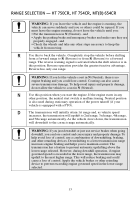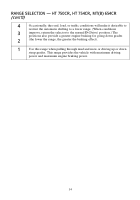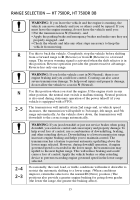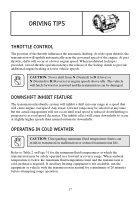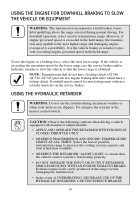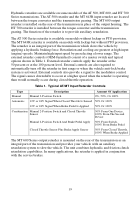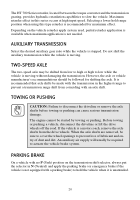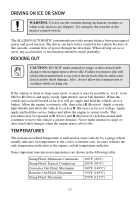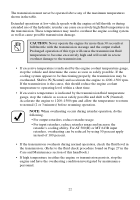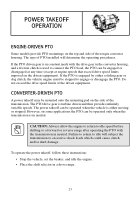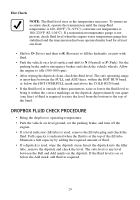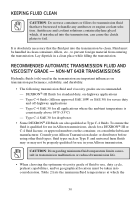ALLISON-OM1334EN - Page 27 of 48
22
The transmission must never be operated above any of the maximum temperatures
shown in the table.
Extended operations at low vehicle speeds with the engine at full throttle or during
extended use of the hydraulic retarder can cause excessively high fluid temperatures in
the transmission. These temperatures may tend to overheat the engine cooling system
as well as cause possible transmission damage.
• If excessive temperature is indicated by the engine coolant temperature gauge,
stop the vehicle and determine the cause as soon as safely possible. If the
cooling system appears to be functioning properly, the transmission may be
overheated. Shift to
N
(Neutral) and accelerate the engine to 1200–1500 rpm.
If the transmission is the cause, this should reduce the engine coolant
temperature to operating level within a short time.
• If excessive temperature is indicated by the transmission fluid temperature
gauge, stop the vehicle as soon as safely possible and shift to
N
(Neutral).
Accelerate the engine to 1200–1500 rpm and allow the temperature to return
to normal (2 or 3 minutes) before resuming operation.
• If the transmission overheats during normal operation, check the fluid level in
the transmission. (Refer to the fluid check procedure found on Page 27 in the
Care and Maintenance section of this handbook.)
• If high temperature in either the engine or transmission persists, stop the
engine and have the overheating condition investigated by maintenance
personnel.
CAUTION:
Never operate the engine for more than 30 seconds at
full throttle with the transmission in range and the output stalled.
Prolonged operation of this type will cause the transmission fluid
temperature to become excessively high and will result in severe
overheat damage to the transmission.
NOTE:
When overheating occurs during retarder operation, do the
following.
• For output retarders, reduce retarder usage.
• For input retarders, reduce retarder usage and increase the
retarder’s cooling ability. For AT 500(R) or MT 643R input
retarders, overheating can be reduced by using 50 percent apply
instead of 100 percent.
Back to Top


